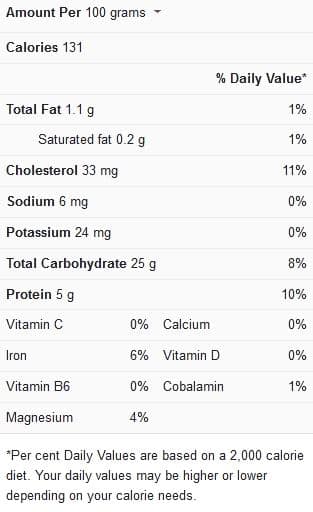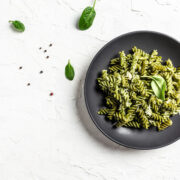Spinach is an underrated hero when it comes to super greens. It doesn’t require the long, slow cooking that other vegetables do (collards and kale are saying hi), and you can simply serve it plain or spiced up with cream or cheese. Cooking pasta together with spinach gives it a vegetarian twist that ends up delicious and satisfying.
If you’re not sure how to cook spinach for a recipe like pasta, this article will walk you through the process. Just make sure to pay attention to the cooking guidelines that have been outlined in this article, especially our helpful tips for the best results.
Pasta nutrition facts

Tips for cooking spinach for pasta
Keep the following tips and cooking guidelines in mind when cooking spinach for pasta:
Use the best possible spinach – Look for dark green spinach leaves when purchasing fresh spinach. Any that are yellowing or wilting should be avoided. Spinach that has slimy leaves or a sour, musty odor should also be avoided.
The better the quality of spinach you use for your recipe, the higher the chances you’ll get delicious and desirable results. In recipes like this, fresh spinach is preferred, although frozen spinach can also be used if thawed and wrung dry properly.
It’s however a better idea to use fresh spinach instead of frozen spinach, as the fresh variety adds important nutrients to this meal that frozen vegetables lack.
Use a wide cooking pan – When cooking spinach, using a frying pan that has high sides is ideal, however, a wok can also be used. At first, the amount of spinach being cooked at a time will seem overwhelming, but the high sides will help keep things contained within.
A frying pan’s large surface area also helps to expose a lot of the spinach to as much heat as possible; this is ideal to ensure that all the spinach wilts evenly and the liquid is evaporated swiftly.
Stovetop cooking is ideal – Spinach is a leafy green with a delicate quality and a high water composition. When a recipe requires the inclusion of cooked spinach, the sautéing method is preferred over blanching or steaming. This is because sautéing the spinach will assist in cooking off some of the extra water contained in the spinach, which is beneficial generally but even more so if you plan to use the spinach in a recipe such as pasta, quiche, or lasagna.
Pureeing the spinach – If you want, you could also puree your cooked spinach into a sauce for your pasta to give it a delicious green twist.
To puree the spinach and incorporate it into the pasta, follow these steps:
- Prepare water in a pot for the spaghetti and cook it until it’s just underdone.
- Inside a large-sized frying pan over medium-high heat, heat up some olive oil. Afterward, add the garlic and let it cook for a few minutes. In the same pan, pour in the spinach.
- With the garlic, sauté the spinach. Season it with salt and pepper once the spinach has wilted. Take the pan off the heat and set it aside.
- Retain one cup of the liquid in which the pasta was cooked before draining the pasta completely. Set the pasta aside after draining it.
- In a food processor, combine the mixture of sauteed spinach and garlic.
- Toss in the cheese and 1⁄2 of the pasta water you initially set aside.
- Puree the mixture in the food processor until a sauce develops (make sure to put in more pasta water if necessary).
- Return the spinach sauce to the pan. Afterward, add the pasta that has been pre-cooked partially.
- Stir the mixture to blend the ingredients and cook the pasta through, if necessary, add in more of the reserved pasta water.
You get delicious spaghetti with spinach sauce if you follow this recipe, so feel free to puree your spinach if you’re interested in getting similar results.
View this post on Instagram
Cooking Time for Spinach for Pasta
Take note of the following timing guidelines when cooking spinach for pasta:
| Cooking procedure | Cooking time |
| Cooking spinach on the stovetop | 1 to 2 minutes (depending on how much spinach you’re cooking), until all the spinach leaves are wilted |

Stovetop-cooked spinach for pasta
Ingredients
- Fresh spinach or baby spinach
Equipment
- Sauté pan with straight sides
- Plate or tray
- Potato ricer (optional)
Instructions
- Fill up your sink or a bowl halfway with cold water, then gently swish the spinach around in the water to get rid of any dirt. Make sure not to stir it too much so that the dirt can sink to the bottom of the water. Take the spinach out, drain and discard the unclean water, then do it all over again if required.
- To dry the spinach, place it on a kitchen towel. You don’t necessarily have to dry the spinach thoroughly, but make sure to remove as much moisture as possible.
- Set up a sauté pan over medium heat on the stove. Toss in the spinach. It’s fine to pile the spinach up a little because the leaves will wilt rapidly, but everything might not fit into the pan at first.
- Toss the spinach with tongs until all the leaves that have not wilted get in touch with the pan’s bottom.
- Put in any spinach that is remaining and continue to mix while the spinach cooks down. You’ll know it’s done when all of the spinach has totally wilted and turned a bright green color.
- Take the spinach out of the pan and place it on a plate to cool until the steam disappears.
- Gather the spinach into a compact ball and squeeze the ball as hard as you can as soon as it has cooled. Make sure to do this over the sink or into a basin if you intend to preserve the spinach juice. You may need to squeeze the juice out of the leaves in batches or, if you have one, make use of a potato ricer.
- Season the spinach with pepper, salt, and any other flavorings if you’re planning to eat it on its own.
After following all the above steps, you’ll have delicious spinach on your hands that you can use in your pasta recipes for a healthy and tasty twist. It’s important not to overcook the spinach so as not to get it into a soggy quality.
If you’d like to see more recipe ideas for cooking spinach for pasta, we recommend that you watch this video recipe.
